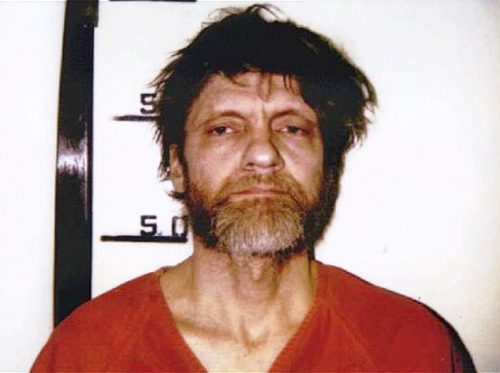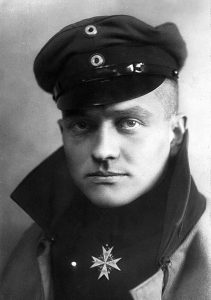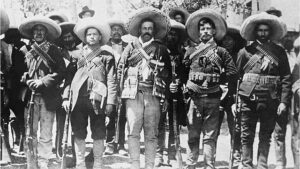Theodore “Ted” Kaczynski, nicknamed the “Unabomber,” killed and injured several people from 1978 to 1995 using mail bombs. Many experts on terrorism have difficulty in establishing whether to consider Ted a terrorist. Some believe he is simply a murderer, while others say that because of his political agenda and his decision to go after certain kinds of people, like science professors and big businessmen, that he should indeed be classified as a terrorist.1
Years before his bombing spree, in 1958, Kaczynski had been a student at Harvard University. The most astounding part is that he was only sixteen years old when he attended his first year as a freshman in college. As a child, Ted had been deemed a gifted student by his teachers. He reportedly had an IQ of 157 at the age of ten. He was allowed to skip sixth grade and work with older students, but he did not like that at all. In his journal, Ted described working with older students as considerably difficult, and he was regularly taunted by them. He never seemed to fit in. During high school, his struggle to be social continued, and he felt isolated from the rest of the students. Despite all of these problems, he still excelled academically and was allowed to skip the eleventh grade. He did have a moment of social fame which came when he made a pipe bomb in one of his science classes, but that moment of fame soon died away and he was alone again.2
During his time at Harvard, Ted continued to have extreme success academically, but still failed to be a part of the college’s social life. He lived in a single room, and some of his classmates recalled the room as messy, and that Kaczynski hardly had any interaction with any of his peers. At Harvard, he joined a study to determine the effects of extreme stress on the human psyche. The study had participants undergo extreme interrogations and personal belittlement over their beliefs and ideals. These interrogations upset Kaczynski, and he began to feel a disdain towards society and authority. According to Alston Chase, a Kaczynski researcher, Ted began to develop a theory to explain his anger and unhappiness. Chase said that, in Ted’s eyes, science and technology were destroying liberty and nature. The “system,” which included Harvard, sought to transform men into automatons to serve the machine by using techniques of behavior modification like propaganda and advertising. Unknowingly, during his undergraduate career, Ted was well on his way to becoming the Unabomber. He completed his undergraduate degree in mathematics in 1962, and went on to graduate school at the University of Michigan. He earned his master’s and Ph.D. in mathematics, and professors often described him as ambitious and talented.3
At that time, the University of California at Berkeley was considered the center of the counterculture movement, and that is where Ted decided to begin his career as a professor. He was uninterested in political activism, and failed, yet again, to become involved with those around him. He didn’t really have the talent to be a teacher and was very unpopular with students. So in January of 1969, he decided to resign his position at the end of the term. He also intended to give up mathematics altogether. His professional and social life began to spiral down after the decisions he had made.4

After his resignation, Kaczynski returned to Illinois, which was where he was born, and lived in a house owned by his parents. He was unemployed, and worked random jobs to get money, as well as borrowing money from his parents. Kaczynski was living as a hermit in the 1970s, and had little interaction with people as he began to sink deeper into his social isolation and anger. He directed all of that anger towards technology and its advancements in society. He began to write about the evils that came with technology and its control over individuals.5 During his time as a hermit, Ted decided to move to Montana where his brother lived. They split the cost of an open piece of land near Lincoln, Montana, and he began to construct a rudimentary cabin that measured 10 by 12 feet and lacked running water, electricity, and heat. Some of his neighbors described him as a quiet man who rode his homemade bicycle and spent a lot of time at the library. He enjoyed reading, and he acquired a substantial collection of volumes that filled his little home. As the decade progressed, he became more and more isolated from society. He returned to Illinois in 1978 and worked at a foam rubber factory where his brother was a supervisor. He was fired by his brother just a few weeks later, after posting insulting limericks around the factory because he had been rejected by a female plant manager. Many believe that this event was the tipping point that began his bombing campaign.6
Ted Kaczynski’s lengthy bombing campaign began on May 25, 1978, when he sent out his first bomb to Northwestern University. The box containing the bomb had a return address with the name of Professor Buckley Crist. The professor was suspicious of receiving a package that she never sent out and asked a campus officer to open it. The bomb detonated and caused the officer minor injuries. Ted then continued his campaign by attempting to bomb an airplane in November of 1979. The bomb detonated in the cargo hold and forced the place to land immediately. This attack sparked the start of a major investigation codenamed “Unabom” because of the university-based targets and the attack on a United Airlines executive.7

Throughout the span of seventeen years, the Unabomber seriously injured more than twenty-two people and killed three. One of the most notable deadly bombings was that of Gilbert Murray, a California timber-industry lobbyist. The package arrived on Monday, April 20. The first person to come in contact with the shoebox-size package was the receptionist who had trouble opening the package and carried it to her boss’ desk. At this point in Kaczynski’s bombing campaign, he had developed much more powerful and deadlier bombs that his previous ones. As Murray started to unwrap the package, it blew up in his hands. The blast killed Murray, forty-seven years old, and was so powerful it knocked two doors off their hinges and blew gashes into the ceiling panels. It was also loud enough that people heard it for blocks around. This startled and scared many people because the Oklahoma City bombing had occurred only five days earlier.8 It turns out that the bomb was never intended to kill Gilbert Murray but instead his predecessor, William Dennison. Dennison was the chief lobbyist for the forest-products trade group from 1980 to 1994 and a highly visible figure in a number of environmental issues. He was replaced by Murray who was killed by a package addressed to Dennison. At that time, William Dennison was seen as the No. 1 person in the timber industry because he was a prominent voice in the Pacific Northwest during the “the timber wars,” which involved environmentalists going up against ranchers, loggers, and the timber industry. Dennison was a key figure in the timber industry and many, including Ted, saw him as a threat to the environment, which could have been a reason why the Unabomber chose him, specifically.9

Around the time of the attack that killed Gilbert Murray, the Unabomber sent a letter to different newspapers, including the New York Times, that offered to stop his bombing spree if they published a manuscript titled “Industrial Society and Its Future,” which would later be known as the “Unabomber Manifesto.” If they did not comply, he threatened that the Freedom Club—”FC” was engraved on all his bombs—would ramp up their terrorist campaign. The manifesto ended up getting published by the Washington Post with help from Time Magazine on September 19, 1995. David Kaczynski, Ted’s brother, read the manifesto and recognized his brother’s writing style from reading unfinished copies that Ted had in his cabin. David contacted the authorities and Ted Kaczynski was arrested in April of 1996 in Montana. In his cabin, they found more than enough evidence, which included bomb-making supplies and early versions of the manifesto, to prove Kaczynski guilty. Two months later, he was charged with several criminal counts relating to the production and distribution of mail bombs. He resisted his lawyers’ efforts of declaring him insane and ended up not being able to represent himself in court. He agreed to a plea deal in 1998 to avoid going to trial. He pled guilty and was sentenced to life in prison without parole, and is still currently serving his sentence.10
- The Greenhaven Encyclopedia of Terrorism, 2007, s.v. “Unabomber, the (1942),” by Patricia D. Netzley. ↵
- Salem Press Encyclopedia of Science, 2013, s.v. “Unabomber case,” by Brion Sever. ↵
- Encyclopedia of World Biography, 2013, s.v. “Ted Kaczynski.” ↵
- Encyclopedia of World Biography, 2013, s.v. “Ted Kaczynski.” ↵
- Salem Press Encyclopedia of Science, 2013, s.v. “Unabomber case,” by Brion Sever. ↵
- Encyclopedia of World Biography, 2013, s.v. “Ted Kaczynski.” ↵
- Salem Press Encyclopedia of Science, 2014, s.v. “Unabomber” by Steve Hewitt. ↵
- Michael Lemonick and Jordan Bontante, “The bomb is in the mail,” Time, May 8, 1995, http://content.time.com/time/magazine/article/0,9171,982900,00.html. ↵
- Kenneth B. Noble, “Bombing in Sacramento: The Investigation; Bomb Meant for Predecessor Of Victim, Officials Say,” The New York Times, April 26, 1995, https://www.nytimes.com/1995/04/26/us/bombing-sacramento-investigation-bomb-meant-for-predecessor-victim-officials-say.html. ↵
- Encyclopedia of World Biography, 2013, s.v. “Ted Kaczynski.” ↵



111 comments
Jose Sanchez
This article was very informative and interesting. His idea of mailing bombs in packages has sadly continued to be copied by others. It is a very scary thing to think about. I had never had of Ted Kaczynski but did now that mailing bombs had originated from someone. It is sad to see an individual with so much intelligence and ambitious come to this.
Luke Lopez
This was a very interesting article on Ted Kaczynski and how he became the Unabomber. Kaczynski never fit in the classroom around other students, which in turn made him angry and he wanted to isolate himself from more people. I did not know that Kaczynski’s brother is the person who turned him over to the authorities. Overall, this was a very well-written article on Ted Kaczynski.
Jose Fernandez
Congratulations on your nomination! I can tell why your article is nominated for the ceremony. It is very informative, and the topic is very interesting. This is the first time I hear about The Unabomber. I think it’s interesting because it isn’t common for a terrorist to have the education and resources this person had. It is sad to hear that someone who could have done so much good for the world ended up sending bombs through the mail. I am very glad they caught him and that he is paying for what he did. I also found it interesting that his own brother was the key to his capture. Great job on the research, good luck for the awards.
Engelbert Madrid
I enjoyed reading this article. Before reading this article, I knew nothing about the Unabomber. While reading the story about Ted Kaczynski, who was responsible for the mail bombs that injured more than twenty-three people and killed three, he suffered a major issue with socialization and being engaged with people. Unfortunately, he couldn’t find another way to recover his self-esteem and attitude.
Angel Torres
Before reading this article I knew nothing on the Unamober. I was surprised that Ted was such an intelligent individual that would end up going on a bombing spree. Ted could’ve used his skills and talents to make a positive change. The article did a good job on emphasizing the fact the Ted was very isolated. Overall, the article was well written and provided a very descriptive background on Ted.
Daniela Cardona
The idea of the Unabomber has always been a scary thought to me. I know recently we had sort of a similar incident where someone was sending poisonous white powders to officials during electives, and just last week an envelope with a mysterious white powder showed up at a police station in town. Just the fact that something so normal, like mail, could be opened to a bomb or a tool of death blows my mind. Still, though, I have to credit Ted’s mind for being so precise and strong and being able to assemble and execute his crimes.
Lyzette Flores
Ted Kaczynski was a very smart man. Not many can say that they got accepted into Harvard University especially at the age of 16. I believe he could have accomplished many things but he let the worst get to him. All of it could have been prevented if only people would have payed attention to him. Some people to this day still fail to realize that bullying has a big impact on others. It leads to depression, anxiety, anti social, and even worst: killing. It seems as all Kaczynski wanted was to have friends, to be social, to be normal and just live life like the others.
Natalie Thamm
This was a really good, and informative article. Before this article, I knew of the Unabomber and what he had done, but I knew nothing of his past, and definitely had not realized that he went to Harvard and even held a PhD. I also had not realized that he terrorized society for seventeen years, and only was caught due to his brother turning him in.
William Rittenhouse
This was such a messed up thing that probably could of been prevented if people would have paid attention. This is also a perfect example of how mental illness goes wrong. People can develop mental illnesses after a rough childhood and dealing with rejection. Once people become mentally unstable they need help, but usually don’t get it because they don’t seek it out. We need to raise more awareness for mental illnesses so people can get the help they need.
Irene Astran
This article reminds me of the recent mail bombs that were plaguing Austin, Texas recently. This is not just a dark series of events from our past, but the destruction has persisted to our present days. It is so scary to me to think these incidences could start up again in any place at any time. Understanding the motives of these people is so intriguing.